It was nine or ten years ago when I first had a Korean dish which, unlike Japanese food, was something I wasn’t too familiar with. At a food court in one of Jakarta’s luxury malls, the colorful look of bibimbap piqued my interest the most as I was choosing what to eat for dinner with friends. Although I wasn’t impressed by the mixed rice dish, that didn’t stop me from actually going to a Korean restaurant several months later with my visiting parents. Either we had picked the ‘wrong’ dishes, or we didn’t know how to properly eat the ones we ordered, or the flavors were too foreign for our palates, so none of us thought the cuisine was great.
In 2014 I had another chance to give Korean food a try as a few coworkers and I went to a mall near our office for lunch. The mall, which had opened only a year earlier, still hosts a large number of Korean restaurants as well as a large Korean duty free shop. We opted for a Korean barbecue chain whose Jakarta outlet was only a few weeks old, and ordered a generous amount of different types of meat as well as japchae (Korean stir-fried glass noodles and vegetables). The first bite of the meat was a revelation: it was so tender and succulent with an addictive combination of sweet and savory flavors, making it one of the best barbecued meats I’ve ever had. To wash it down we had oksusu-cha (Korean corn tea) which sounded a little strange at first but turned out to be one of my favorite types of tea.
On my first trip to South Korea, exploring Seoul’s food scene was among the things I was most looking forward to, and with a true foodie travel partner in James, trying as many local dishes as possible became one of our top priorities. On the midday flight to Seoul I was hoping to try a real Korean dish, maybe bibimbap. However, we were offered two choices of breakfast meals instead: rice congee or omelette. This was understandable as our flight was supposed to depart the night before, so the breakfast meals they prepared for the following morning could only arrive in Jakarta around 12 hours later. We chose the rice congee, and although it wasn’t a proper, filling lunch, that was the first time I had a type of plump, short-grained Korean rice with an interestingly soft and slightly chewy texture which I grew fond of.
Our real experience with Korean food began on our first morning in Seoul. Feeling hungry and cold, we went to the first place we saw which was just across the small street from our hotel. It looked decent from the outside, and as we stepped inside a cozy and warm ambiance exuded from within; it appeared to be a family-run restaurant. Amid a jumble of Korean letters none of us could read, there were fortunately some English words on the menu so we didn’t have to make random guesses. First came Korean fried pancakes which were not only delicious, but also an ideal dish to have when the temperatures outside never went above 10 degrees Celsius. Not long afterward came a metal bowl filled with a cornucopia of mouth-watering colors: bright red spicy octopus with cabbage, fresh green lettuce, slightly translucent yellowish beansprouts, glistening black seaweed, and white rice made from the same kind of grains I had tasted on the flight the day before.
I once read about the Korean philosophy of Eumyangohaeng, the theory of yin and yang and the five elements that make up the universe. According to this belief, a person’s health is determined by the balance of yin, yang and the five elements, hence the plethora of Korean dishes served or garnished with the five colors: red, green, yellow, black and white. For sure, our satisfying early lunch provided us with much-needed energy to explore the chilly South Korean capital.
For dinner we were in a more adventurous mood, and we made a beeline for Gwangjang Market. Underneath the covered alleys of the market were hundreds of food stalls selling just about anything Korean, from a wide array of fermented vegetables, to heaps of japchae (thick glass noodles) and steaming mandu (Korean dumplings). But we ignored them for now as we wanted to taste one dish this market is particularly famous for, so much so there’s an entire alley dedicated to it. It was yukhoe, a Korean take on steak tartare, that drew us there in the first place.
Despite having been a sashimi lover since the first time I had the Japanese raw fish dish many years ago, my experience with uncooked beef only began last October in Sydney. Different from the Vietnamese-style steak tartare I had in Australia’s largest city which was sprinkled with fried shallots and served with prawn crackers, our yukhoe came with a generous amount of raw beef sitting atop julienned Korean pear, served with sesame oil, sesame paste, fresh garlic and chili peppers as condiments. On top of the beef was a raw egg yolk to be mixed in with the other ingredients. This is probably a dish your doctor or nutritionist warns you against trying, but it’s a delicacy that has been eaten by generations of Korean families, so they must know what they’re doing.
After finishing a generous portion of yukhoe and a bottle of soju (Korean distilled liquor), we ventured deeper into the market to sample some Korean snacks. Bindaetteok, or fried mung bean pancake, was our first choice. Stacks of the pancake sitting on a brightly lit perforated metal counter would certainly tempt any passers-by, including us. The snack, made from mung bean batter with mung bean sprouts and other vegetables, was perfect for the late afternoon as the coldness of night started to creep in. Then we headed to a nearby stall where a pile of local delicacies that might appear intimidating to some were sitting next to warm mandu. Everything was delicious, but our stomachs could only take so much food. We had to call it a day and skip other snacks in the market which looked equally tantalizing.
On our final night in Seoul, we explored the southern banks of the Cheonggyecheon, a revitalized stream that has now become a symbol of the city’s rebirth as a more livable place. We were wandering around and stopped at a small street where two restaurants stood directly opposite each other. One specialized in sannakji (live baby octopus), and the other in bulgogi (grilled meat). Despite being very curious about the squiggling yet potentially dangerous seafood dish many people have filmed themselves trying, we opted for meat instead which turned out to be a great decision. Our trip to Seoul surely didn’t start in the best way possible, but our dinner of the juicy and spicy “fire meat”, what bulgogi literally means in Korean, was perfect to end the trip on a high note… though we might have pushed ourselves a little too much with individual bottles of makgeolli (Korean carbonated rice wine) since we didn’t think it would be so potent.
Our flight back to Jakarta was quite uneventful, until it was time for the flight attendants to serve lunch. “Would you like to have bibimbap or ….?”
“Bibimbap!” both James and I responded enthusiastically. We can’t even remember what the other dish was, but it certainly wasn’t Korean.
She handed out a plastic bowl filled with vegetables and minced beef to each of us, alongside a sealed container of white rice. We followed the instructions, mixed the rice into the bowl, added sesame oil and gochujang (Korean red chili paste), and voilà! A delicious-looking bibimbap for lunch. It tasted much better than the one I had many years ago, although that’s probably because of my more receptive palate today, the result of a long process of embracing unfamiliar flavors from different cultures that make the world a fascinating place.

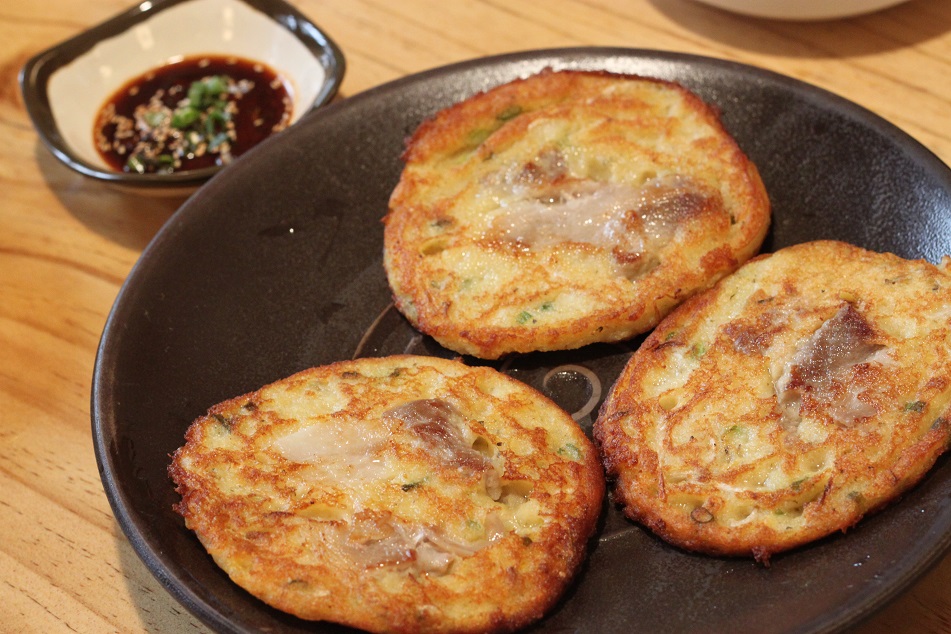

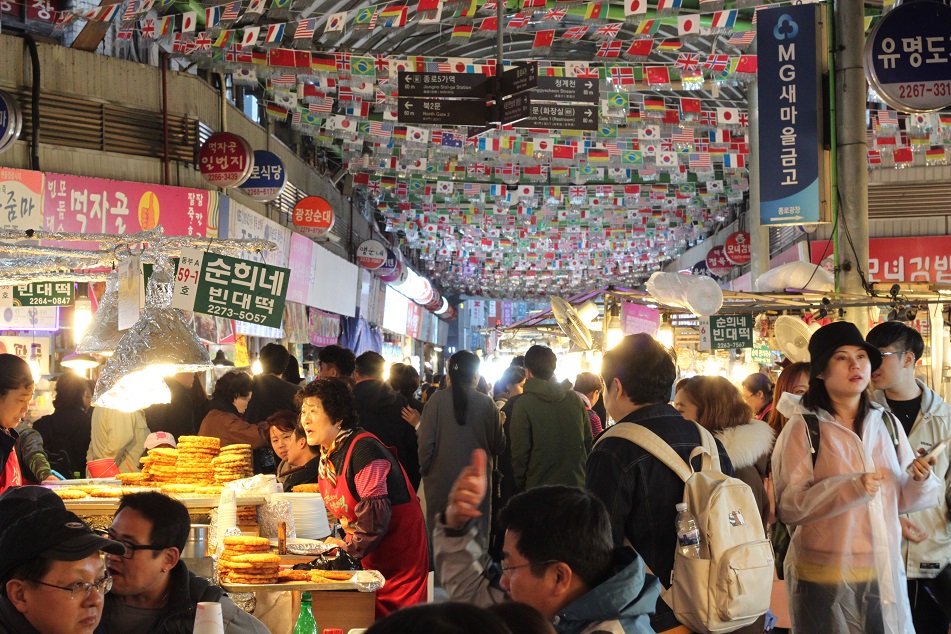
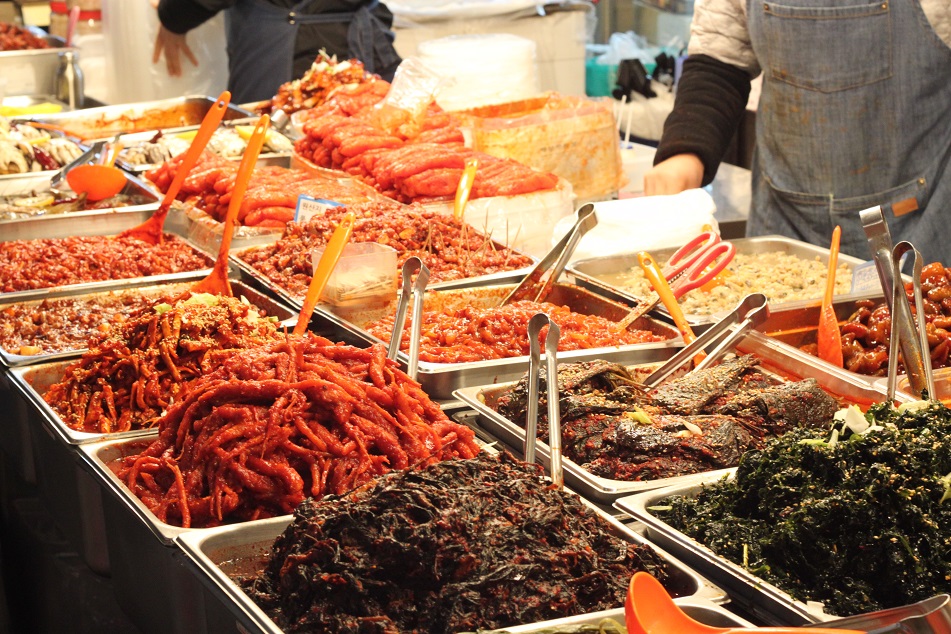
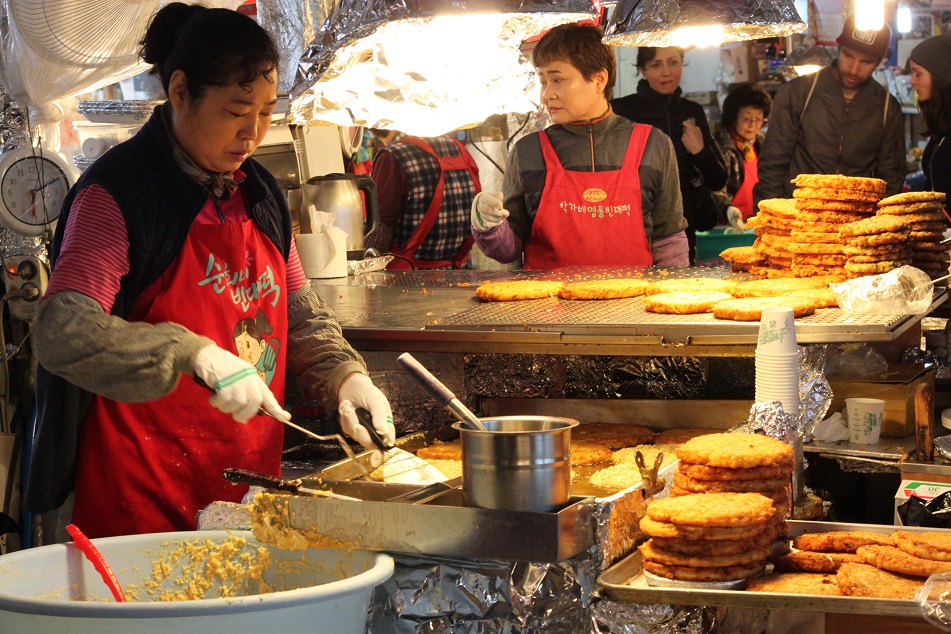
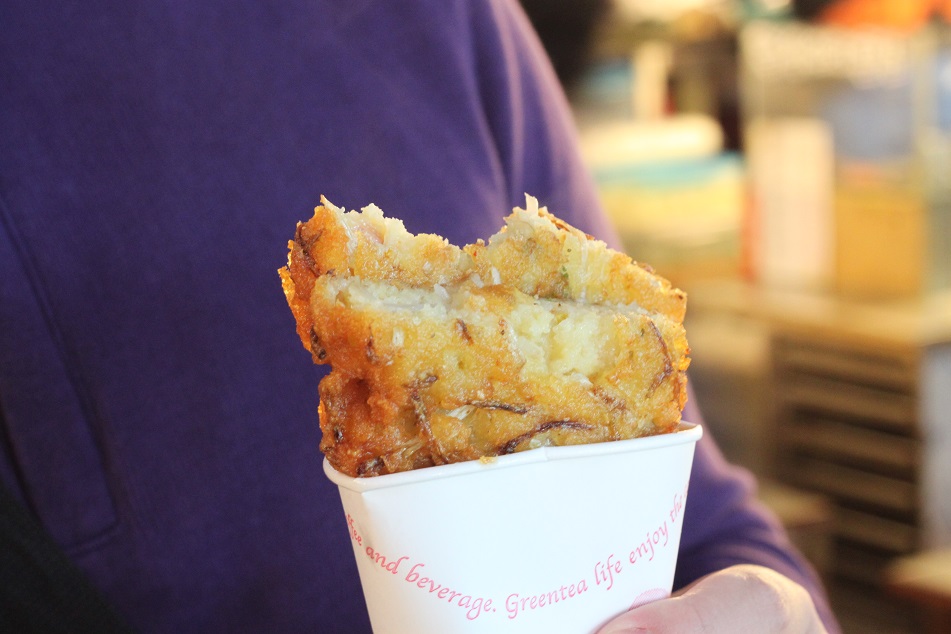


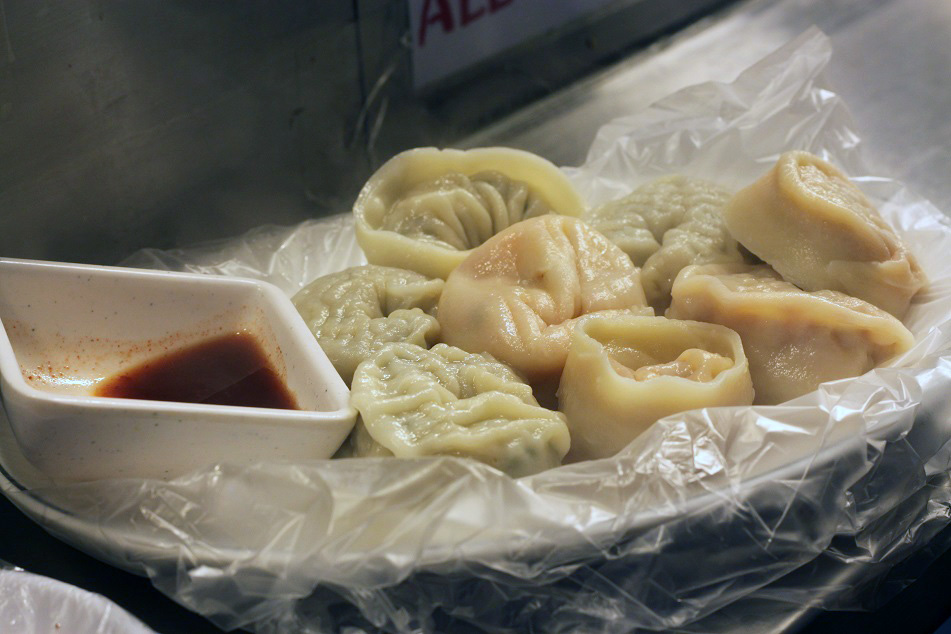
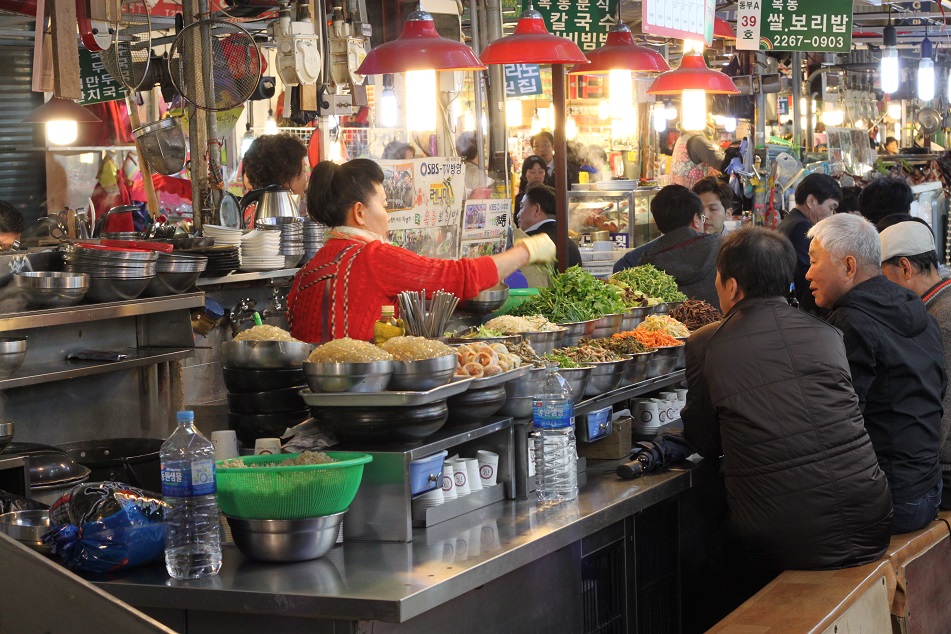
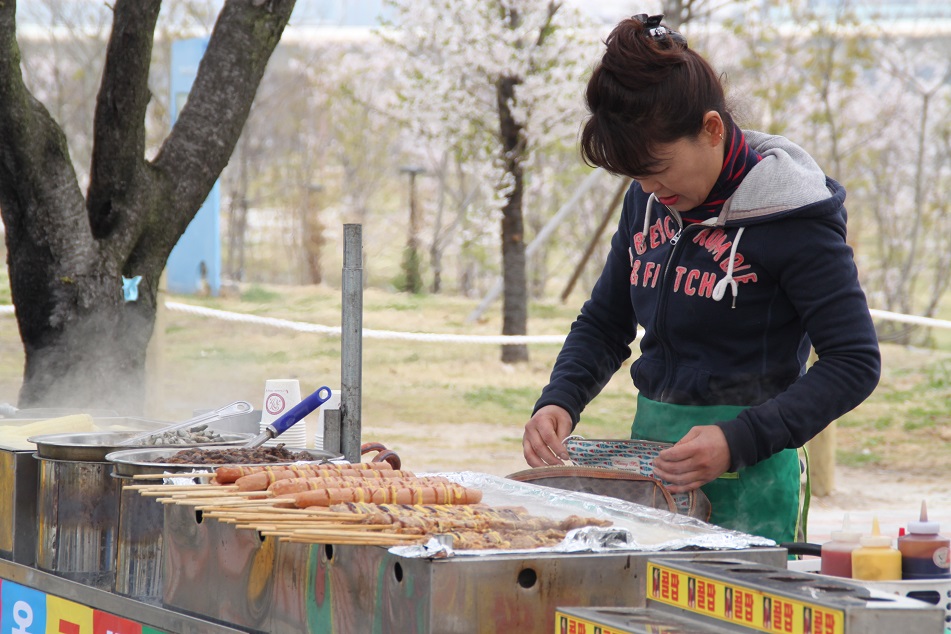
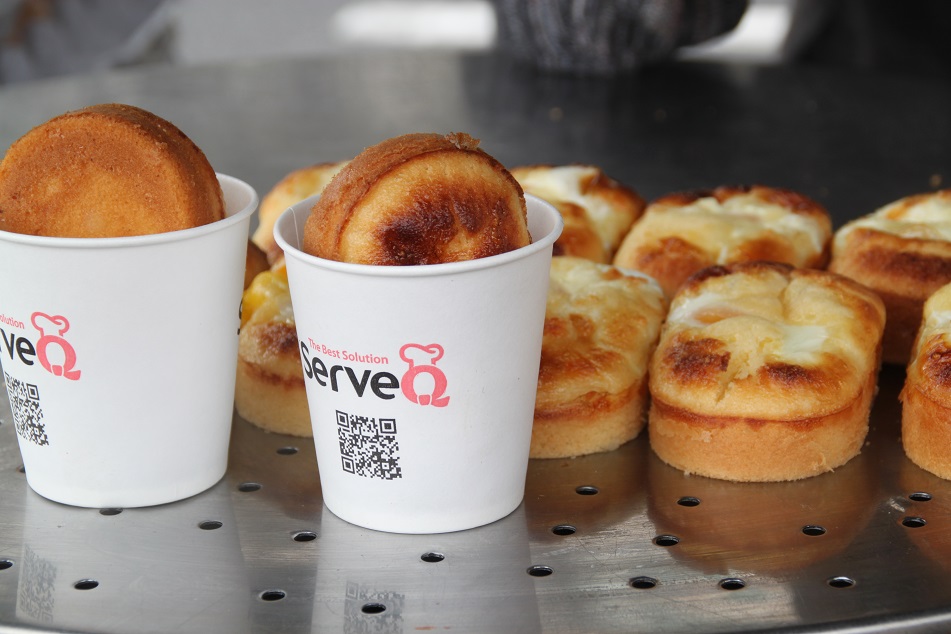

it looks wonderful!
LikeLike
Korean food not only is satisfying for your taste buds, but also a feast for the eyes.
LikeLiked by 1 person
Your pictures make me want to try a Korean dish, even though I have not eaten any in my entire life. Great post, Bama!
LikeLike
When you see a Korean restaurant near where you live, maybe you should give it a try, Peter. After all, you’ll know whether you like a dish or not only after you try it. 🙂 Thanks for reading!
LikeLiked by 1 person
The food markets are fantastic!
LikeLike
Food markets are always among the best places to be in a city. The only problem is there’s no way to try all dishes just in one visit.
LikeLiked by 1 person
Very true!
LikeLike
I remember the egg bread: fluffy and warm, as you say. A delight, because it was so different from many other things we tried. Another set of things I remember specially were sweets, many full of sesame. Thanks for bringing back memories.
LikeLike
Seoul was very cold the morning I was in Yeouido. So having something warm to hold and to munch was a bliss. However, I don’t think I tried any of the sweets on this trip, which is something to look forward to the next time I’m in the South Korean capital. Thanks for reading.
LikeLike
I love bibimbap. I hope they served you kimchi along with one of the dishes. I don’t really remember all the names if dishes. But yes I had some tasty street food at Namdaemun.
LikeLike
On my flight back to Jakarta they did give me kimchi along with that delicious bowl of bibimbap. It was really a satisfying inflight meal — probably among the most memorable of all the flights that I have taken.
LikeLike
Lovely!
LikeLike
Eating at a market is a bit of a novel experience for me, for in Northern Italy it’s not that common (it is, though, in Sicily and so on). I love the looks of Gwangjang market, I’ll pass on the recommendation to my better half, who’s often in Korea; I bet she’ll love it (by the way, that smiling lady is a delightful picture, talk about pleasure in doing one’s job!)
Raw meat is, I agree, an interesting concept. In Piedmont, my region, we do have such dishes as an antipasto, and last time I went, with friends, in one such “piola”, or traditional restaurant, it was fun to see the non-Piedmontese (or the non-Italian) wives of some of us being a bit squeamish about it…
LikeLike
So I guess in your part of Italy most people eat either at home or at restaurants? Do you think it’s because northern Italy is cold (compared to the south) so people prefer to stay indoors? A little bit of story about that smiling lady; as she was preparing some dishes for us and other customers, she dropped something on the table. Luckily everyone was in a good mood (thanks to the good food), hence the smile. Is that raw meat dish that you mentioned called carne cruda? I just googled it and that’s what came up on top.
LikeLiked by 1 person
Carne cruda alla piemontese 🙂 As to why markets don’t sell food, I don’t really know! I think that the majority of markets in Northern Italy are itinerant, taking place once or twice a week, and even where they are ‘fix’ (see Porta Palazzo in Turin), as you said, the idea is to eat in a restaurant. A bit of a shame, really, because market food is usually top notch!
LikeLike
Not only is the quality of food at markets usually excellent, it’s the lively ambiance that makes the whole experience even better. But I guess each place has its own approach to how food should be enjoyed.
LikeLiked by 1 person
Looks so delicious! So hungry now…
LikeLike
Probably I should’ve warned everyone not to read this on an empty stomach. 🙂
LikeLike
After a visit to Korea, the food has always been my least favourite. Perhaps because I didn’t eat meat at that time, but I want to go again and visit the south. I live where there is a substantial number of Koreans so maybe I’ll venture into a Korean restaurant here before I go — you’ve given me courage to try again.
LikeLike
I think you should try one of the Korean restaurants near where you live, Mallee, because from my experience our palates can change over time. Hopefully you’ll find a really good one that serves delicious and authentic Korean dishes, and before you know it you’ll probably book the flights to Seoul!
LikeLiked by 1 person
I’m so glad I read this after dinner, Bama – your account and tantalizing photos took me right back to Seoul. It is hard to pick a favorite but I do remember the mandu we had at Gwangjang Market being the best I’ve ever tasted. And of course how could I forget the yukhoe we tried earlier that night? 🙂
LikeLike
If you hadn’t done your research on Korean food, we wouldn’t have known about yukhoe which is among the most memorable Korean dishes I’ve ever tried in my life. I really enjoyed the combination of raw beef, sweet pear, and all the condiments; it made me wonder how long it was for the people in the past to eventually come up with this delicious dish.
LikeLiked by 1 person
Great post. It is so wonderful to try different cuisines, especially in the country where they are made! Yum!
LikeLike
Exactly! And that is also the reason why I want to go to Brazil even more now after trying Brazilian food for the first time last month here in Jakarta. Nothing beats trying cuisines in the country/region where they’re from.
LikeLike
Hi Bama. Great post as usual and I enjoyed reading it. I don’t have much experience with Korean cuisine – the only things Korean that I eat somewhat regularly are kimchi and this spicy instant noodle called Shin Ramyun. Korean cuisine is not at all popular here in Lodz, Poland where I live. The only place where they claim to serve Korean cuisine is at a food court in a mall. I have only ever tried their kimbap, kimchi and noodles from there. I do know that Korean cuisine is more popular in Kathmandu, my hometown. I am thinking of trying out some of those Korean restaurants in Kathmandu when I visit in a couple of months. I also follow a channel run by a lively Korean woman called Maangchi on YouTube, she has some great recipes but I have never given it a try hehe. There’s a yukhoe style dish here in Poland as well, and it’s also prepared using raw egg, although I imagine the Korean version to be more spicy and flavored. We have a similar version of raw meat dish called Kachila (made of buffalo meat) in Nepal but I’ve never tried it, as it’s quite specific to the Newar ethnic group of Kathmandu.
LikeLike
Thanks Pooja! I remember my first time trying kimchi I wasn’t really impressed. But now I really enjoy it. Five years ago I also liked to have Shin Ramyun as an alternative to the Indonesian instant noodles that I usually had. However, since Samyang’s spicy ramen entered the Indonesian market (and on YouTube there’s a lot of ‘challenge videos’ of people around the world trying this super spicy Korean ramen) I always buy it every now and then. A new, even spicier variant just came out a few weeks ago and when I tried it I reached my tolerance for chili — it was THAT hot!
I’m really intrigued by kachila now. Is it widely available in Kathmandu/other cities around the capital? And are there things I should pay attention to when choosing the right place to try this dish?
LikeLiked by 1 person
I don’t have a great tolerance for chilli so I think I will give the Samyang a pass hehe. Shin Ramyun is hot enough for me.
It is a traditional Newari dish and is available in Newari eateries only. I’ve never actually tried it, Bama, as I don’t come from Newar community and all I ever ate in the Newari eateries I sometimes went to were smoked meat (chhoyela), omelette with pulses(baara) and dried meat salad(sukuti)!
LikeLike
If Shin Ramyun is hot enough for you, then yes, I think you should keep a safe distance from Samyang. Well noted, Pooja. When I get the chance to return to Kathmandu I will do further research on the dish. Thanks for bringing that up! I’m very intrigued now.
LikeLike
I must admit I’m not a huge Korean cuisine fan (due to unfamiliarity more than true dislike), but all your photos and descriptions were delicious! I was lucky in Seoul to have a local acquaintance who took me to dinner and ordered everything. I liked almost all of the choices she made. What looks best to me here are some of the foods you found in the markets – the mung bean pancakes, the egg bread, and the regular fried pancakes – YUM!
LikeLike
I guess unlike Japanese food, it takes a while for some people to get used to Korean food; kimchi’s tartness can surely be off-putting to some, and others may find the spiciness level of several Korean dishes too much to handle. However, the latter actually helped me enjoy the food much better now because of all ingredients in the world I think chili is my favorite.
LikeLiked by 1 person
I was adopted from Seoul Korea by an Irish family. I didn’t start eating Korean food until my late 20’s and I have to say it is in my top favorite foods. I have not been back to Seoul yet, but do plan on making a trip back to the homeland sometime in my life. I enjoy reading your blog and seeing all the delicious food!!
LikeLike
Do you still remember the first Korean dish you had? It must have been a very heartwarming experience to be able to reconnect with your roots. Hopefully on your next trip to Seoul you’ll get the chance to try more Korean dishes. Thanks for reading and sharing your story!
LikeLike
Oh yum! You’re making me crave a return to Seoul again for the pancakes, the bibimbap, the bulgogi, the fried chicken, and the kimchi….
LikeLike
I remember when I was reading your post on Seoul, I wished that the chance for me to go there would come sooner than later. Of all the dishes you mentioned, I only missed the fried chicken. I don’t know why I didn’t try it in Seoul, but from what a coworker said apparently it’s very popular there to have fried chicken and beer. Maybe next time!
LikeLiked by 1 person
So glad you were able to explore Seoul sooner, as you wished. When you return to try the fried chicken with a glass of Cass, let me know what you think.
LikeLike
Sure I will.
LikeLiked by 1 person
Perhaps I was put off Korean food when a friend brought over a jar of kimchi a few years back…I wasn’t impressed. But that’s not fair judging a cuisine by this one experience. Your descriptions and photos of the food are heavenly. I’m actually a big fan of steak tartar (despite the warnings). My parents used to serve it regularly back in the 60s-70s. I didn’t even know it was part of Korean cuisine. Glad you stayed away from the live baby octopus!
LikeLike
Ah yes.. to me the flavor of kimchi is rather an acquired taste. Speaking of raw beef, now I know that there are actually a lot of variations of the dish in many parts of the world as you and a other readers suggested. Does the dish in your part of the world have a specific name? For now I give the live baby octopus a wide berth, but who knows in a future trip to South Korea I will end up trying it.
LikeLiked by 1 person
I have always known it as steak tartar and experienced it much like you show with a raw egg, diced onion and spices.
LikeLiked by 2 people
Ahh I see. I’ll make sure to try it when I see a restaurant serving it in Canada — whenever I reach that part of the world.
LikeLiked by 2 people
I’m on a month-long period of abstinence from certain foods (non-vegetarian) and I did not need to see this now! Everything looks soooooo good!
LikeLike
So sorry you stumbled upon my blog during this very period of abstinence for you. Nevertheless, thanks for dropping by!
LikeLike
I love your storytelling, Bama. I use it as a quite for my own, even. Love how personal yet educational it is. Also, I might as well brag about it because, well, duh, but I live in Koreatown, Los Angeles and I am surrounded by bibimbap and bulgogi and everything else Korean that the heart desires! ✌️😎
LikeLike
Much appreciated, Jess. You’re so lucky to live in a place where you can have bulgogi and those delicious dishes on a daily basis. I’m curious though whether you’ve seen a place in Koreatown that serves yukhoe.
LikeLiked by 1 person
Never had yukhoe in KTown but will hunt for it and let you know!
LikeLiked by 1 person
This looks amazing Bama! So much more of the world for me to explore. I’d go crazy trying all these unique dishes.
LikeLiked by 2 people
And when you do come to Seoul one day, bring Paul and the kids too! They would love trying those unfamiliar dishes.
LikeLiked by 1 person
Most of my Korean food experience is barbeque and kimchi. I have never tried raw beef, but like you said, they’ve been doing it for generations. Bibimpap is one of my wife’s favorite foods – she eats it 2-3 times a week at her school.
LikeLike
You should try yukhoe! The pear, the sesame paste and the other things really make this dish something you shouldn’t miss when you’re in Seoul. I don’t know about Kristi though as I remember her being a pescatarian. She can try other equally tantalizing dishes though, including the mung bean pancake and mandu.
LikeLike
Great virtual tour as always, Bama! Thanks for reminding me my memories from this impressive city and I love Korean food. Bye. Kamila
LikeLike
Glad you enjoyed this post, Kamila! Korean food has now become one of my favorite cuisines, and the fact that there are still many dishes I have yet to try only means one thing: I have to go back. 🙂
LikeLiked by 1 person
I have bookmarked this article for a long time. I know it would be helpful someday, when planning my trip to South Korea 🙂
LikeLike
At least this post can provide you with a glimpse of what dishes you should have when you’re in Korea — there are still more that I have yet to try.
LikeLiked by 1 person
It’s really interesting how our palate can evolve throughout the years, isn’t it.
oooohhh~ Fried mung bean pancake! *jotting it down on my list
LikeLiked by 1 person
That is so true! There are a lot of dishes that I like today which was not necessarily the case if you asked me 10 years ago. That fried mung bean pancake was such a perfect snack on that particularly cold day.
LikeLike